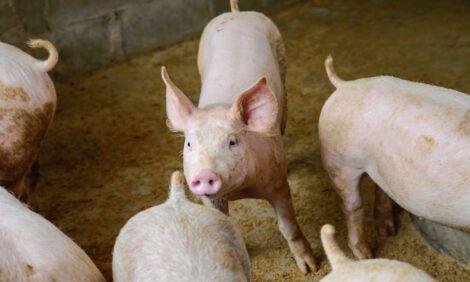



CME: Forecasts Revised as Droughts Damage Crops
US - As US farmers get ready for plantings this spring, they are keeping a close eye on the developing crops in South America. And for good reason, write Steve Meyer and Len Steiner. Brazil and Argentina have developed
during the last two decades into two of the biggest agricultural
commodity suppliers in global markets. Today we’ll look at just
corn and soybeans.
In the early 1990s, Brazil and Argentina
accounted for about 7% of global corn exports (vs. US at 75%)
and 27% of global soybean exports (US at 60%). By 2003/04,
however, the situation had changed dramatically and the two
countries increased their share of corn exports to 20% while the
US share fell to 65%.
The shift in soybean trade was even more
dramatic, with Argentina and Brazil accounting for about half
of the global trade in soybeans and the US share down to 43%.
The January USDA forecasts of Argentine and Brazilian exports in the 2011.12 marketing year expected further
gains in their relative position in global corn and soybean trade.
Combined they were expected to export about 27 million MT of
corn (about 1.06 billion bushels), roughly 28% of world exports.
Soybean exports from S. America suffered last year but this
year higher production levels were supposed to bring S. American supplies back to about 50% of world export demand.
These
forecasts will likely be revised significantly lower later
this week as drought conditions in Argentina, and to a
lesser extent Brazil, appear to have significantly damaged crops. Much of the drought damage appears to have
happened in Argentina and analysts polled by Dow Jones ahead
of the USDA report now expect the Argentine crop to be about
21.65 million MT, about 4.35 million MT (~170 million bushels)
lower than the January forecast. Indeed, some analysts believe
that the damage to the Argentine crop could be even more extensive and wire reports indicate farmers that planted early
likely had to abandon their crops or re-plant with soybeans.
The Brazilian corn crop is pegged by analysts at 59.2 million
MT, about 1.8 million MT (71 million bu.) lower than the January forecast. With a combined production potential lowered by
almost a quarter of a billion bushels, there are plenty of questions as to corn availability in exports markets this spring and
summer. And while US corn supplies are expected to improve
by Q4 on account of higher acres and, fingers crossed, better
yields, in the short term US corn supplies remain limited. If these estimates materialize, higher prices will be
required to buy more corn from other suppliers, largely the US
and ration demand in countries that are large net corn importers (Japan, S. Korea, Mexico). For cattle and hog feeders and
packers, the drought in S. America represents one more threat
to their margins, squeezed by rising input costs as well as
pushback from end user down the supply chain.









